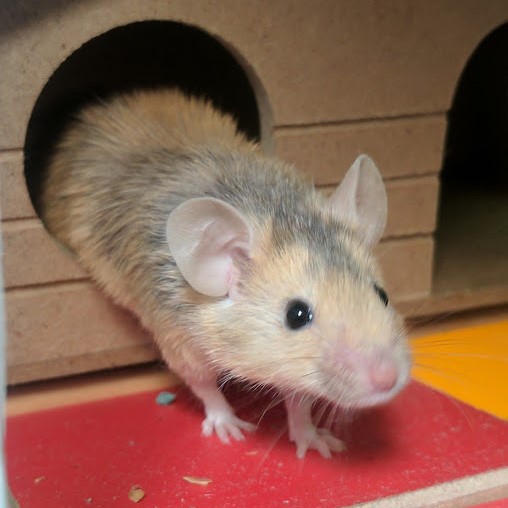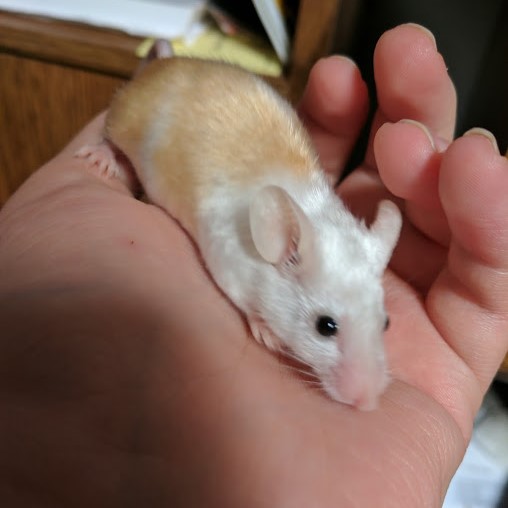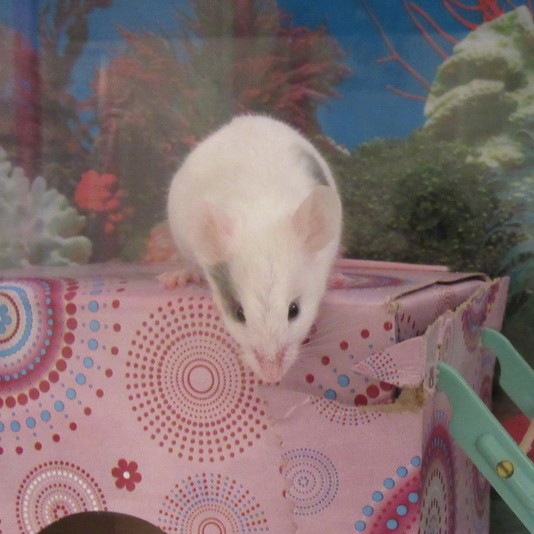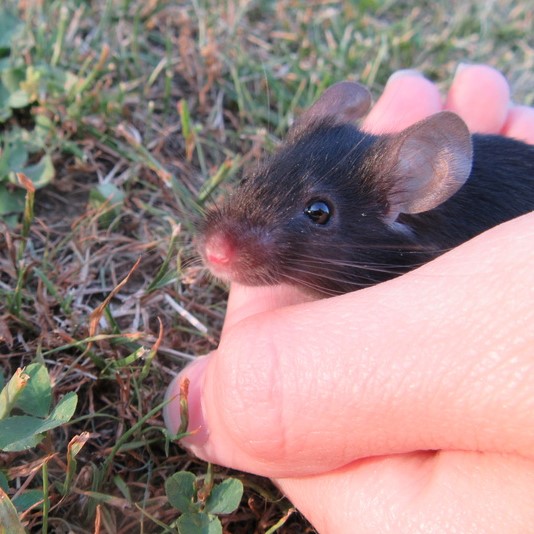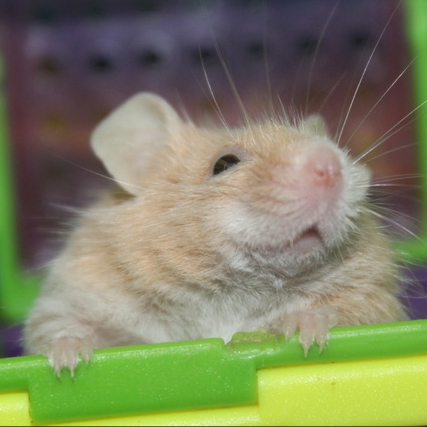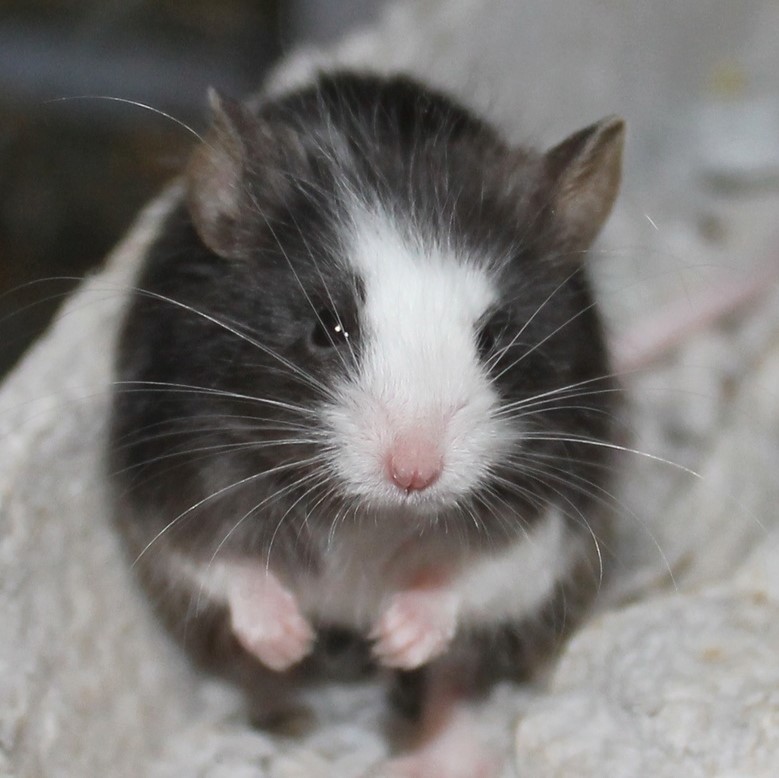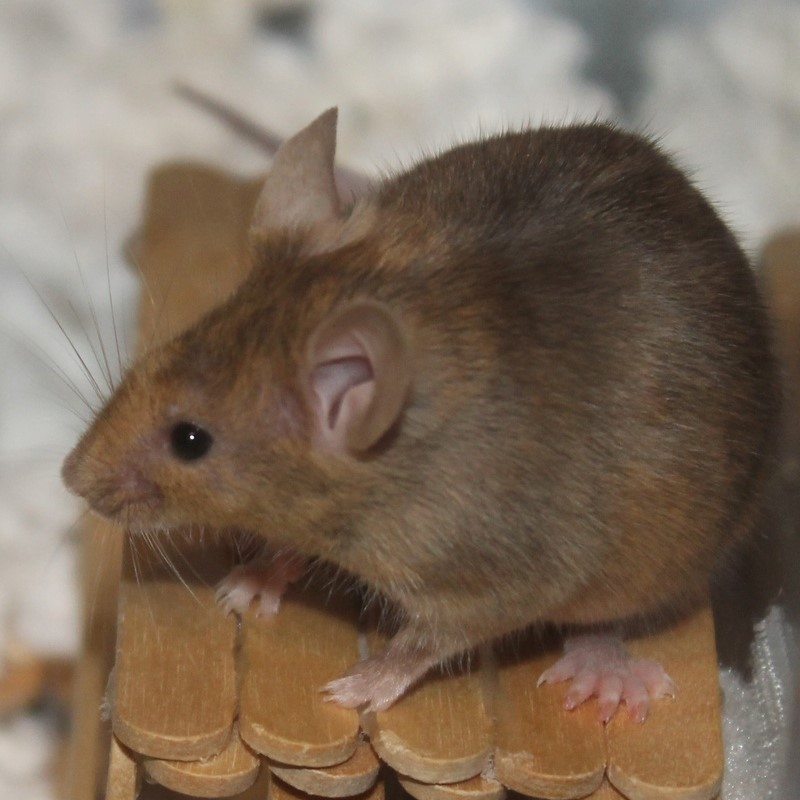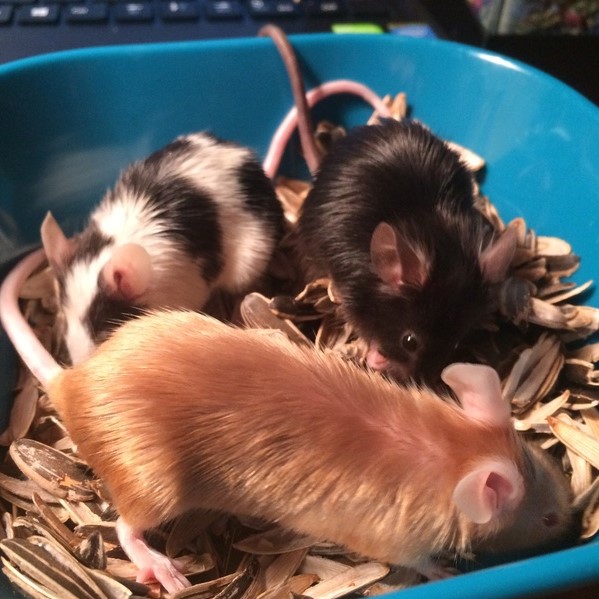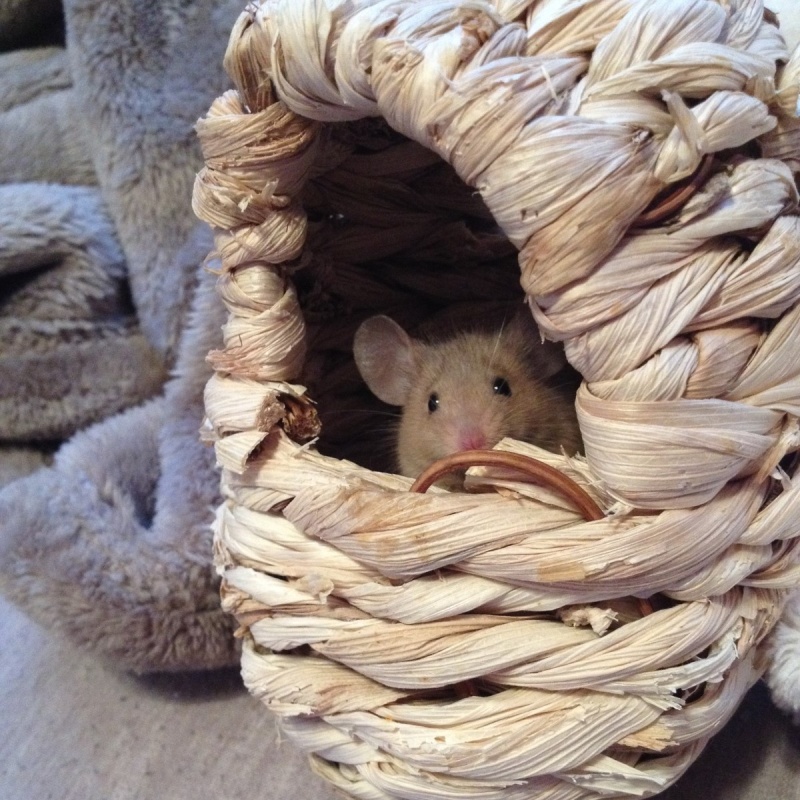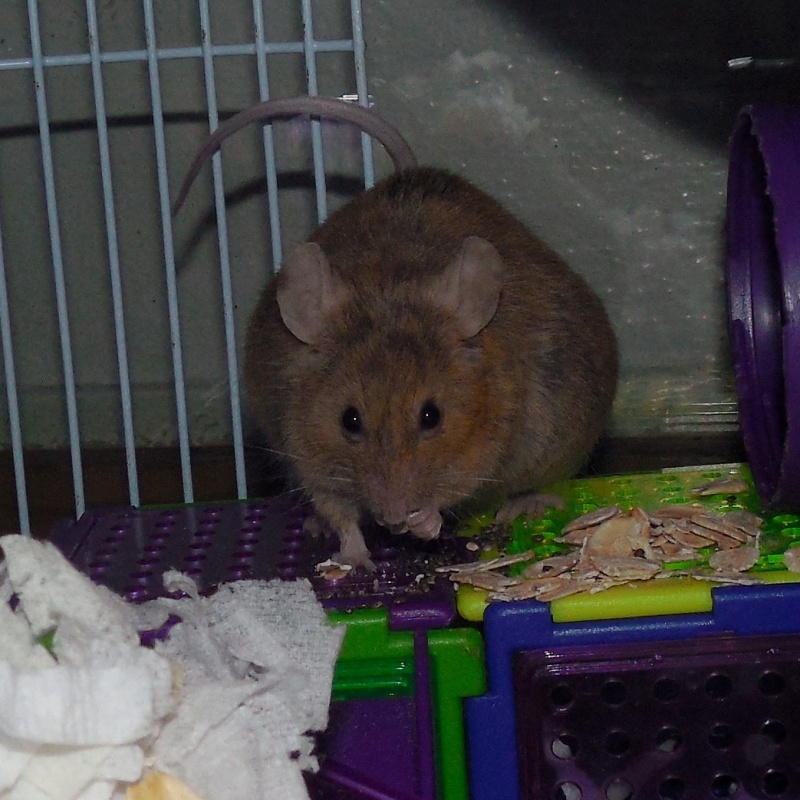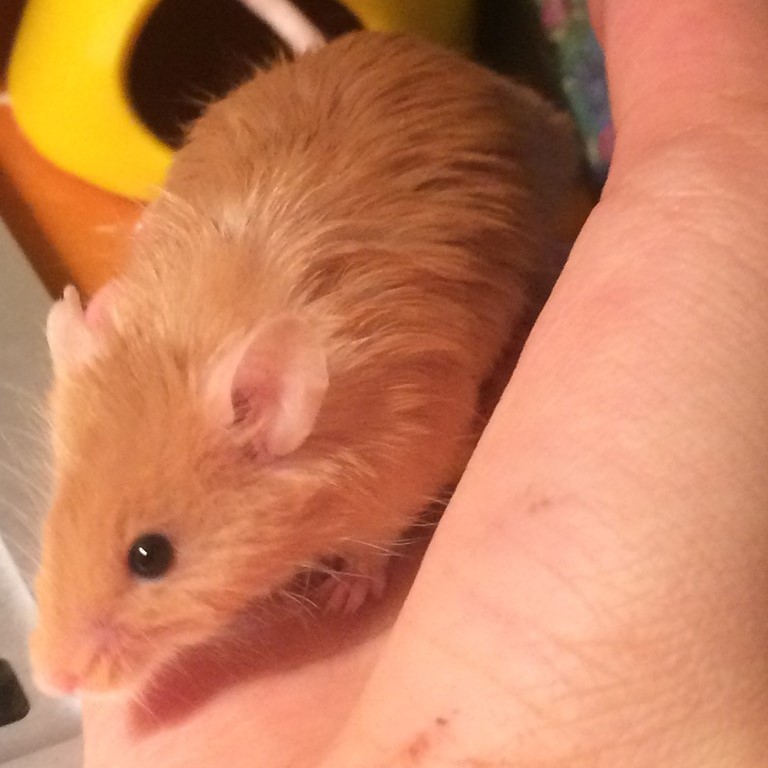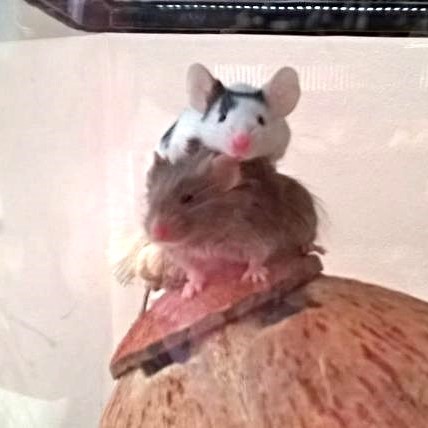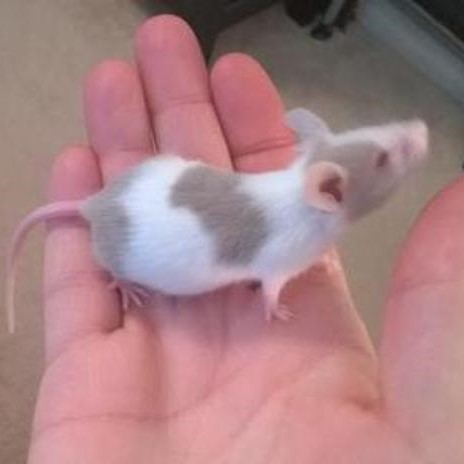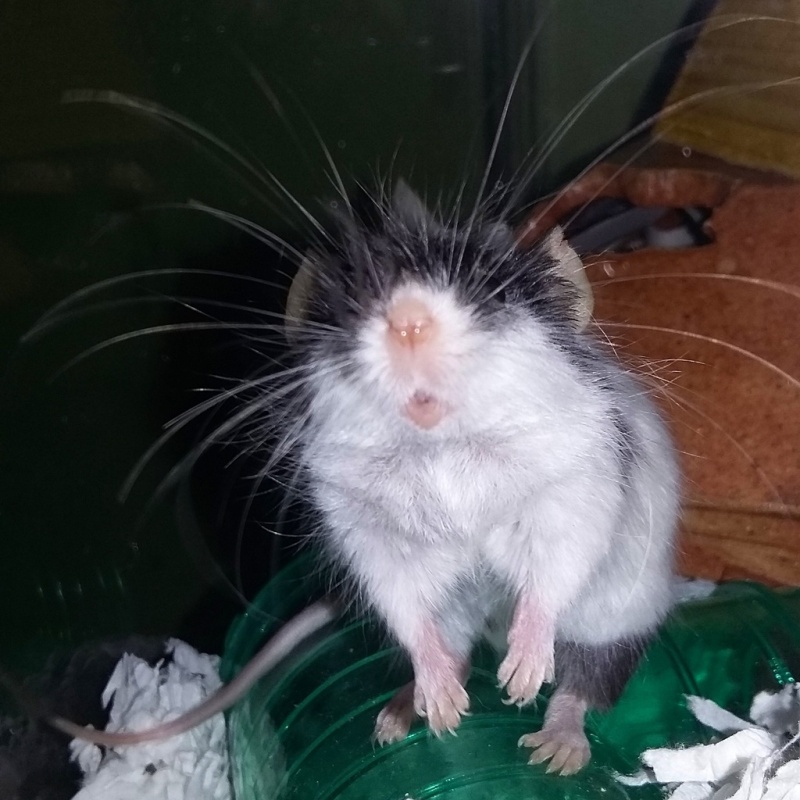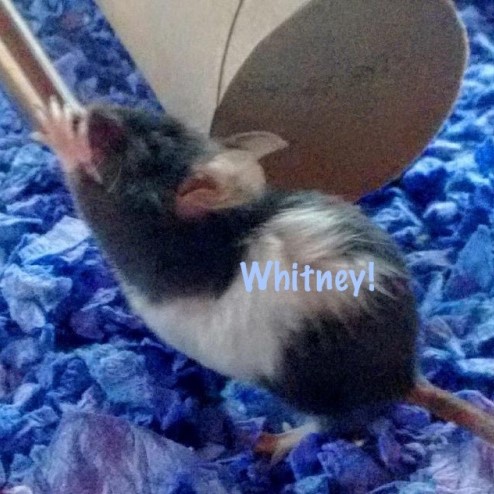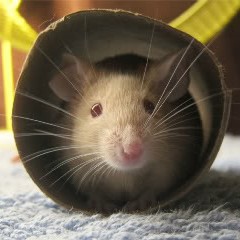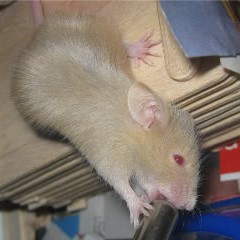Wild Mouse/Mice care and information
+4
CallaLily
CinnamonPearl
Peachy
Artistwolf
8 posters
Page 1 of 3
Page 1 of 3 • 1, 2, 3 
 Wild Mouse/Mice care and information
Wild Mouse/Mice care and information
So, you were cleaning and found yourself a litter of wild mice, huh? Or maybe your dog or cat brought you one, or you may have found one laying in the driveway... No matter how you found them, they need help, and you don't know what to do.
Well, we will certainly try to to help! It is not easy to care for a wild mouse, and depending on their age, it can be downright time-consuming, sleep-depriving and nerve-wracking. In advance, we give our highest regards to those of you who find yourself trying to care for such helpless, tiny creatures. It takes a big heart to go through what you are going through, and we send you much strength for the days to come.
This will seem lengthy, but this article is written to assist those that need to know what to do *right now* as well as for those that have yet to find a wild mouse but want to be prepared.
1. Should you come across a litter...
If you found the litter outside (in a wood pile, your barn, or some other spot that does not include the interior of your actual living quarters) DO NOT MOVE IT. Stop what you are doing and walk away. Do not disturb the nest or the babies further. While mother mice don't sit on their babies, they don't stray far from the nest either. It is very likely that the mother mouse is still around and is waiting for you to leave. It is *very* important that you give her a chance before you interfere.
If the babies have no fur (are pinkies) you may check on them in two hours. If the babies have fur but their eyes are closed, check on them after four hours. If the litter is gone when you return, the mother moved them someplace safer. If the litter is still there, try to see if all the babies have milk-bellies, without disturbing the nest at all. In a pinky, this looks like a rubber-band underneath the skin that wraps across their belly. If this band is full of milk, it appears white and swollen... this means Mom didn't move them, but they are being fed. If this is the case, let them be. If you return and there is no evidence that Mom has been there (the babies are as you left them and they are squeaking, crying, and appear cold) then you can be sure they have been abandoned.
If you found the litter inside your home, the choice to move them is harder. Personally, I would leave them, and start stocking up on humane traps to catch them later. You are a poor, poor substitute to raise a litter, and because the mother (and father) is still out there, there will be another litter somewhere in your home in another month. However, if you choose to not go my route... Remove the litter carefully and gently, moving as much of the original nest as possible with them. Depending on their age, you will have to either adjust your schedule to feeding them or call a wildlife rehabilitation clinic in your area to do it for you. Read on to learn about how to feed, what to feed, and the environment to keep them in.
You have determined the litter/pup has been abandoned...
To help you determine age, here is a link to day by day pictures of a domestic fancy mouse. Keep in mind that there may be a slight size difference.
https://www.petmousefanciers.com/t43-breeding-packet#1262
Set up a box, preferably a plastic bin/RUB, a large Kritter Keeper, or an aquarium tank. A shoebox works well for pinkies, but once they start moving and their eyes open, you will need a box they cannot chew out of. Fill the box with shredded paper and toilet paper, about 2 inches deep. Add a smaller box that can be used as a hideaway. Put the babies in a place that is dark, quiet, and low traffic. Do not disturb the babies unless it is to feed or clean/stimulate them.
Kitten Milk Replacement (KMR) is your absolute best bet for success, but in lew of KMR, puppy milk is second best. DO NOT give cow's milk, human infant milk or any other kind of milk. The cultures and nutrients are not enough to sustain a fast-growing body and can do more harm then good. In a pinch, and this is emergency ONLY because they CANNOT live long on it, you can use dog or cat kibble (preferably dog), scrambled eggs, water, and Pedilyte/ plain old Gatorade (or just water if you can't get Gatorade or Pedilyte). Blend these ingredients into a smooth, watery blend and puree this so that the liquid is as thin and smooth as possible. You can feed this to a baby mouse, but not for more than 24 hours. They need milk, and they *will* die without it.
If you don't have a syringe, vet's will often give you a mL one for free if you ask for it. They can be found at tractor supply stores. If they won't take the syringe, you can use the tip of your finger or a high quality detail paintbrush. DO NOT use a cheapy paintbrush (like ones that come with kids' watercolors) because if they ingest a hair off the brush, it can kill them.
Now, in feeding these guys...YOU MUST be patient. Baby mice do not suckle fast, nor do they eat very much. They have tiny tummies, this is really important to remember. It is NOT unreasonable to spend a hour trying to feed a litter of babies. Do not force them to drink, let them do it at their own volition. If they refuse the tip, put them down and move to another one, then go back and try again in a minute of two. Hold the baby so that it is laying on it's belly in a natural position so that it's head is hanging ever so slightly off the edge of your finger or hand. Do not hold the baby vertical. Offer the baby the tip of the syringe and let them figure it out, it doesn't take long for them to realize where the milk is coming from. They should eat .05cc of milk per gram of their body weight every feeding. Do not panic if you only get a small amount down them. Just keep trying. Babies aspirate (choke/drown) incredibly easily, so be VERY careful not to get ANY milk in their nose or make them eat too fast. After feeding, stimulate them to go potty and make sure you use a warm, damp paper towel (do not soak them, especially if they are pinkies) to wipe them clean of any spilt milk. Leaving milk to dry on them can cause skin rashes and itchy conditions.
You WILL get frustrated. That's OK. Just keep trying. This is NOT easy, it is really hard, and we all wish you the very best should you find yourself doing this.
2. OK, so maybe you didn't find a baby, but a full grown adult.
If you have trapped this mouse and you have determined it is not injured or ill, take it outside to release it back into the wild, at either dawn or dusk. Make sure the weather is nice and that there are no storms on the horizon. Make sure you release the little guy *at least* 1 mile from your home and in an area where there is bird-activity and lots of ground cover... or in an area where you know there is probably other mice. Find more detailed instructions below.
If you have found this adult mouse outside, make sure it is not ill, injured, limping, or bleeding from anywhere. Keep them calm, quiet and warm in a dark, safe place. Put them in a plastic bin or box with a *tight*, perforated lid... wild mice are escape artists. Once he recovers, he WILL try to get out. Offer him water in a shallow bowl and a hidey-box he can hide in.
If the mouse is hurt, your best bet is to call your local Wildlife Rehab Center and make arrangements to take the injured mouse there.
If he seems sick, he is lethargic and not moving... get a syringe and make a mix of Pedilyte or Plain Gatorade and water. If you do not have Pedilyte or Gatorade on hand, use regular water. It is easier and faster to rehydrate using the mix with Pedilyte or Gatorade, but not necessary. Try to get some of this down him, he needs to be re-hydrated as fast as possible, but go slowly... every two hours until he starts to perk up. Once he starts breathing normally and seems a little more coherent, you can back off getting liquid down him to every 4 to 6 hours. Offer him a shallow dish of water or KMR soaked on Oatmeal or bread, and wild bird seeds. Once he appears to have gained back his strength, which may take a few days, you can let him go free.
If he seems lively, he just needs a few hours to recover, you can release him following the directions below.
3. When, Where and How To release your Foundlings
Baby mice should be released at 5 weeks old. Normally, they would be weaned at 4 weeks, BUT because you are feeding them inferior KMR, they need the extra week of nutrition.
If you have somehow managed to find not just the babies, but the mother as well, and she is still nursing them...you may release them all when the babies are 4 weeks old.
It is very important to pick a time of day when releasing. Wild mice are most active around dusk and dawn, contrary to the common belief that mice are nocturnal. Releasing a mouse in the middle of the night in unknown territory can and will stress them out and cause them to freeze and panic, rather than seek shelter and start setting up a new home.
Releasing at dusk is my chosen ideal time of release. They are basically just waking up to start their "day", and with the whole night ahead of them, to release at dusk affords the the opportunity to stake out new territory and get comfortable.
You will want to release them when you know there are no storms or bouts of bad weather on the forecast for the the next three-days (at least). This is because mice, are essentially, homebodies. They move with reluctance and extreme trepidation. Therefore, when they are released back into the wild, they typically need a few days to get used to their new home enough to explore it. If you release a wild mice on the eve of a storm, they will remain where you let them go, huddled under a bush or rock or log, and will die of exposure because they are in a kind of shock.
You will also want to release them where there are ideally other mice...so farm-fields, meadows, areas where there is a lot of ground cover, downed trees, piles of rocks, etc. and where birds are present. Birds eat a lot of the same seeds and things mice do, so if there are birds, there are other mice around. Releasing close to a water source is OK...but mice typically get all moisture needs relived from insects they eat, or from dew they drain off the leaves of plants and rocks, so do not worry if you don't have a stream running through the area, they do not need such a huge water source, but you do want to make sure there are plenty of bugs and other plants that do need moisture to survive...if there are plants and bugs, there is water nearby, and the mice will find it.
I release all wild animals I help recover out by my horse barn. Now, many folks who may live in apartment buildings, or in the city of-course, do not have this option, and they will have to drive some ways to find a suitable place...for instance, in a heavily wooded park. If you should live in a well-developed area, you do not want the mouse finding it's way back into yours, or another person's home, but if you are like me, and live in a rural area where co-habiting with wildlife is a way of life, then you may pick a spot that is good to you. I do not mind seeing mice running about my barn or corrals, but if you do not want them to come back into your home, then you might consider taking them *at least* a mile away from where you or others live. Plenty of wild bunnies and other rodents share the area around my barn as a place to live, I know there are other mice there, and there is plenty of places for them to hide, so releasing them there, for me, is beneficial. Most people who own livestock understand mice, and if you have a friend who has a barn or corrals, if you ask nicely, they probably won't mind you using their area to release your mice.
Now, this is the important part...wild mice raised by humans are usually more cautious when first placed in the wild. They will not run off, or bolt, they will remain frozen and confused right where you put them. They will need a "safe-house" (like the onew mentioned below) while they adjust to their new home. To keep mine safe, I have an area just outside my corrals that has been fenced off. It used to be a stall for a third horse, but now that we only have two, this area is not only cut off from the horses, but surrounded by a fence in which large predators cannot invade. The presence of the horses keep the predators away, but they cannot stomp in and crush a little one either. Bunnies, birds and mice often use this "balcony" as a place to safely spend the day, lounging in the shade and picking up whatever the horses pitch onto the ground...it's a "safe-house". I set up a tiny wooden house, in which I half- covered in straw and dirt, sunk into the ground, where it is cool, beneath some low brush in there. I set up a pile of rocks near it so that water and bugs are attracted to it, and they don't have far to go to find sustenance.
Make sure the shelter affords TWO holes...mice have a bolt hole in the wild, they also build *many* "escape" holes in which they can escape out a "back door" should something enter through the main entrance. Having an escape route makes them feel safe, not trapped. When you place them in this shelter on the day of release, put them in, and walk away. Do not wait and observe, leave. Let them get used to the new smells and new place and to come out of their shock on their own. Standing over them may make it worse.
They typically spend about three days to a week in this "safe-house" and area, then one day, are just gone. They can and do return to the area from time to time to garner more foods and whatnot, but will leave on their own to seek their own fortunes. The day you come and check to see if they are still there (checking on them is inevitable) and see that they are gone, you can be sure they have adjusted and returned themselves truly to the wild. When you do check on them, make sure to remain a safe distance away, and do not try to coax or pet them, they must retain a mild degree of fear and caution...once returned to the wild, you do not want them to be friendly, they will die otherwise.
Once they leave the "Safe-house", I take away the wooden house to be used later. It is obvious when a mouse is no longer using a certain home....it is obviously abandoned. Once I determine that the safe-house has been left for good, I remove it so that no other critter decides to move in. Signs of abandonment include scattered bedding, no activity in or around the safe-house, old poo, not new or fresh, and it is unkempt. Mice keep their actual homes very precise and clean, if it looks like no one lives there...no one does.
4. Letting wild mice stay wild
Now... here is where I climb on my soap box. I am NOT a vet, these are things that I have done to raise and set mice free when I find the odd wild one that needs my help. This is NOT a guarantee that following these instructions will save your wild one/s. It is *hard* to hand-raise pups and most times, you will lose, but you have to realize... at least you tried. So many people don't even try. The way I have outlined the instructions is with a view to letting them go free when it's time. If you do not feel up to taking on this enormous task, then it would be best to contact your local Wildlife Rescue and Rehabilitation Center. They have the tools, the time and the training to raise your foundlings and set them free... and if they don't, they know someone who can and can help you get to them.
If you raise them yourselves, whether from pinkies or from weaning, do NOT offer them commercialized pet-foods. Try to keep them on wild bird seed and insects, and do not give them wheels or water bottles. Do not interact with them except to feed or clean them, do not try to tame them or pet them. You want to try to keep them as wild as possible and as not used to people as possible so that they can survive in the wild when you set them free. There aren't water bottles in the wild, or wheels, or dishes. Sprinkle their seed (if they are old enough to eat it), wild mice hunt and root for food. Feeding them live mealworms and crickets helps them hunt and will be a great asset in the wild. Not taming them ensures a healthy sense of self-preservation.
I mention this because this brings us to the *hardest* part of raising baby wild mice. Should you be successful, you will also get *very* attached. It is a very, vety bad idea to keep them as pets, though. They are cute, and they will seem tame (especially if you raise them from being pinkies)... you will say to yourself that since you raised them, and a mother mouse did not, that they will be unable to survive in the wild. You will think that the wild cannot be a better place then a pampered life you can give them. This is a horrible untruth and misconception. Wild mice, even those raised by humans, have some of the *strongest* natural instincts in the world and they revert to those instincts in a blindingly fast amount of time. Unless the wild mouse in question is permanently injured or ill, and will definitely not be able to survive in the wild, there is no good reason to keep a wild mouse away from where they belong. In the end, no matter how tame they seem, they are *wild animals* and deserve to be wild and free. They are born for it, and their instincts will kick in. They WILL be fine. Especially if you can manage to release them near other wild mice. If you loved them enough to save them and raise them, you have to love them enough to do the right thing and set them free, back to where they belong.
There are several other reason why they should be set free as soon as possible. First, it is against the law in most States to keep wild animals... including mice. Because of this same law, vets cannot legally see your little mouse. If he gets sick, no vet will treat him, and it is not fair to keep an animal you cannot seek medical help for. If you do take him to a vet, chances are high that they will confiscate the animal and destroy it.
Additionally, wild mice are rarely happy in captivity. If caught as an adult, they will spend their days trying to get away. If hand-raised from a pinky, their natural instincts can kick in at any time and one day they may go from "happy-and-tame" to "wild-and-crazy"...all in the blink of an eye. It happens *a lot*. They just turn, and follow their naturally bred instincts to be wild. They also need 3 times more room, and 3 times more toys and things to do to stimulate them and keep them psychologically healthy than our Domesticated mice do to be happy at all. That's *at least* a 20 gal Long tank for *ONE* mouse. Has to be bigger if you have more than one. They also need a highly specialized, high-protein diet....even the rat and mouse mix that is bad for our domestics isn't high enough in protein for them. They cannot, absolutely CANNOT be kept in anything BUT aquariums with locking clips and wire mesh tops. They WILL chew out of or get out of...or kill themselves trying to get of anything else.
Last but not least, there is the social aspect. Mice are social creatures, but they are more so in the wild. If you have yourself ONE female mouse, she WILL need company or she WILL die. Female mice cannot survive without their friends. You cannot go get a domesticated one either, because wild mice are extremely territorial and they will not hesitate to kill the domestic intruder. So, if you have a female wild mouse, you've just doomed her to a sad, long, painful and lonely death. Male mice cannot be housed with anyone but themselves. Wild males typically have a territory 3 to 7 miles in radius, and a huge harem to protect. They will -no question- kill *any* other mouse in their territory... especially if it's male.
Catching and removing another wild mouse out of the wild in order to keep yours company is completely out of the question, and beyond cruel, so this is not an option.
Then there is the last part of this... say you manage to raise that whole litter... if they aren't separated into female colonies, and single-male territories at 4 weeks old, every female in the original litter *will* get pregnant and you'll be facing a huge population explosion in less than a month. A female's gestation period is about 23 days, and wild mice can litter up to 20-odd babies. Do the math... this can get out of control frighteningly fast.
Last but not least, well-taken care of wild mice can live up to 5 years old. Now for most animal lovers, that kind of commitment is no big deal, but it is if you realize and understand that for five long years, you will have to care for an animal that is wild... one that may be never be tamed and may never be friendly... or one that may turn into the wild animal he or she is. 5 years is a long time to try to clean a tank of an intractable, seemingly ungrateful monster... why? Because he was never really a pet... he is a wild animal.
It comes down to the basics. The right thing to do is set a wild-thing free... they are meant to be wild, not live in captivity. To deny a wild animal it's true destiny and potential is cruel and not at all necessary, keeping a healthy wild mouse/mice is just plain selfish. So, raise those baby wild mice, relish in the joy of seeing them flee into their new lives, free and wild as they are meant to be, knowing you gave them a second, strong chance out there.
And if you find yourself missing their company....look into getting yourself some domesticated mice. Domestics are meant to be pets and will enjoy what you have to give them, whereas the wild ones will always long for what you won't give them... their freedom.
Safe House Example
http://mouseranch.com/FYI/releaseShelter.shtml
Thanks to Neurozool!
The mouse shelter is now done. It is based off the blueprints on http://www.mouseranch.com and stars MM showing off how you use it!
Such a good girl! You can hear her 'bruxing' (?) all the way though, but when she is in the pantry it is the loudest.
https://www.youtube.com/watch?v=X39OAirwnWE
Hope you all like! If anyone wants one of their own, but can't build it themselves, we will sell them for a small fee plus shipping. All wild mice should have the chance to be free, and learn how to be without being someones lunch within the hour! Thank you so much Mouse Ranch!!
Well, we will certainly try to to help! It is not easy to care for a wild mouse, and depending on their age, it can be downright time-consuming, sleep-depriving and nerve-wracking. In advance, we give our highest regards to those of you who find yourself trying to care for such helpless, tiny creatures. It takes a big heart to go through what you are going through, and we send you much strength for the days to come.
This will seem lengthy, but this article is written to assist those that need to know what to do *right now* as well as for those that have yet to find a wild mouse but want to be prepared.
1. Should you come across a litter...
If you found the litter outside (in a wood pile, your barn, or some other spot that does not include the interior of your actual living quarters) DO NOT MOVE IT. Stop what you are doing and walk away. Do not disturb the nest or the babies further. While mother mice don't sit on their babies, they don't stray far from the nest either. It is very likely that the mother mouse is still around and is waiting for you to leave. It is *very* important that you give her a chance before you interfere.
If the babies have no fur (are pinkies) you may check on them in two hours. If the babies have fur but their eyes are closed, check on them after four hours. If the litter is gone when you return, the mother moved them someplace safer. If the litter is still there, try to see if all the babies have milk-bellies, without disturbing the nest at all. In a pinky, this looks like a rubber-band underneath the skin that wraps across their belly. If this band is full of milk, it appears white and swollen... this means Mom didn't move them, but they are being fed. If this is the case, let them be. If you return and there is no evidence that Mom has been there (the babies are as you left them and they are squeaking, crying, and appear cold) then you can be sure they have been abandoned.
If you found the litter inside your home, the choice to move them is harder. Personally, I would leave them, and start stocking up on humane traps to catch them later. You are a poor, poor substitute to raise a litter, and because the mother (and father) is still out there, there will be another litter somewhere in your home in another month. However, if you choose to not go my route... Remove the litter carefully and gently, moving as much of the original nest as possible with them. Depending on their age, you will have to either adjust your schedule to feeding them or call a wildlife rehabilitation clinic in your area to do it for you. Read on to learn about how to feed, what to feed, and the environment to keep them in.
You have determined the litter/pup has been abandoned...
To help you determine age, here is a link to day by day pictures of a domestic fancy mouse. Keep in mind that there may be a slight size difference.
https://www.petmousefanciers.com/t43-breeding-packet#1262
Set up a box, preferably a plastic bin/RUB, a large Kritter Keeper, or an aquarium tank. A shoebox works well for pinkies, but once they start moving and their eyes open, you will need a box they cannot chew out of. Fill the box with shredded paper and toilet paper, about 2 inches deep. Add a smaller box that can be used as a hideaway. Put the babies in a place that is dark, quiet, and low traffic. Do not disturb the babies unless it is to feed or clean/stimulate them.
- If the babies are pinkies (no fur) or their eyes are still closed, you will have to feed them every 2 hours around the clock until their eyes open (two weeks old). You will also need to stimulate them to go potty. To stimulate them, use a Q-tip and rub their genitals/lower belly gently in a clockwise motion. You can use your finger too, but be *very* careful, and do not push on or tap the belly. Make sure you keep them warm at all times!! Pinkies will die if they get too cold. While feeding and stimulating, I like to cup each baby in my bare hand and hold it close so my body heat can help keep the baby warm. Until the eyes open, you should place half of their box over a heating pad on LOW. By placing the heating pad under only half of the container, the babies can move themselves away from the heat if they get too warm. If you have pinkies (no fur) check and make sure that it doesn't get too warm. Pinkies won't be able to move off of the heat very well and they can die from being overheated. A nest should be around 80°F. If you have only one mouse, he'll need the pad until he's about 4 weeks old.
- If the babies have their eyes open, and are fully furred, they are at least two weeks (14 days) old... much easier. At two-three weeks old, you can feed them their milk-substitute every 4 to 6 hours. At four and five weeks old, feed them every 6 to 8 hours. After 5 weeks, they will be weaned and able to survive on their own. Starting at two weeks, you should also begin to offer real food and water. Sprinkle about 2 tablespoons per baby of wild bird seed around their box. If you do not have bird seed to give them, use dog kibble, uncooked oatmeal, rice, scrambled eggs, uncooked pasta, toasted bread, or cereals that are all-natural and healthy, and get them wild bird seed as soon as you can. Use a *very* shallow cap (like the top of a Snapple bottle) as a dish of water. You don't want to use a deeper dish because babies can fall in and will drown. Check their water often to make sure it stays clean.
Kitten Milk Replacement (KMR) is your absolute best bet for success, but in lew of KMR, puppy milk is second best. DO NOT give cow's milk, human infant milk or any other kind of milk. The cultures and nutrients are not enough to sustain a fast-growing body and can do more harm then good. In a pinch, and this is emergency ONLY because they CANNOT live long on it, you can use dog or cat kibble (preferably dog), scrambled eggs, water, and Pedilyte/ plain old Gatorade (or just water if you can't get Gatorade or Pedilyte). Blend these ingredients into a smooth, watery blend and puree this so that the liquid is as thin and smooth as possible. You can feed this to a baby mouse, but not for more than 24 hours. They need milk, and they *will* die without it.
If you don't have a syringe, vet's will often give you a mL one for free if you ask for it. They can be found at tractor supply stores. If they won't take the syringe, you can use the tip of your finger or a high quality detail paintbrush. DO NOT use a cheapy paintbrush (like ones that come with kids' watercolors) because if they ingest a hair off the brush, it can kill them.
Now, in feeding these guys...YOU MUST be patient. Baby mice do not suckle fast, nor do they eat very much. They have tiny tummies, this is really important to remember. It is NOT unreasonable to spend a hour trying to feed a litter of babies. Do not force them to drink, let them do it at their own volition. If they refuse the tip, put them down and move to another one, then go back and try again in a minute of two. Hold the baby so that it is laying on it's belly in a natural position so that it's head is hanging ever so slightly off the edge of your finger or hand. Do not hold the baby vertical. Offer the baby the tip of the syringe and let them figure it out, it doesn't take long for them to realize where the milk is coming from. They should eat .05cc of milk per gram of their body weight every feeding. Do not panic if you only get a small amount down them. Just keep trying. Babies aspirate (choke/drown) incredibly easily, so be VERY careful not to get ANY milk in their nose or make them eat too fast. After feeding, stimulate them to go potty and make sure you use a warm, damp paper towel (do not soak them, especially if they are pinkies) to wipe them clean of any spilt milk. Leaving milk to dry on them can cause skin rashes and itchy conditions.
You WILL get frustrated. That's OK. Just keep trying. This is NOT easy, it is really hard, and we all wish you the very best should you find yourself doing this.
2. OK, so maybe you didn't find a baby, but a full grown adult.
If you have trapped this mouse and you have determined it is not injured or ill, take it outside to release it back into the wild, at either dawn or dusk. Make sure the weather is nice and that there are no storms on the horizon. Make sure you release the little guy *at least* 1 mile from your home and in an area where there is bird-activity and lots of ground cover... or in an area where you know there is probably other mice. Find more detailed instructions below.
If you have found this adult mouse outside, make sure it is not ill, injured, limping, or bleeding from anywhere. Keep them calm, quiet and warm in a dark, safe place. Put them in a plastic bin or box with a *tight*, perforated lid... wild mice are escape artists. Once he recovers, he WILL try to get out. Offer him water in a shallow bowl and a hidey-box he can hide in.
If the mouse is hurt, your best bet is to call your local Wildlife Rehab Center and make arrangements to take the injured mouse there.
If he seems sick, he is lethargic and not moving... get a syringe and make a mix of Pedilyte or Plain Gatorade and water. If you do not have Pedilyte or Gatorade on hand, use regular water. It is easier and faster to rehydrate using the mix with Pedilyte or Gatorade, but not necessary. Try to get some of this down him, he needs to be re-hydrated as fast as possible, but go slowly... every two hours until he starts to perk up. Once he starts breathing normally and seems a little more coherent, you can back off getting liquid down him to every 4 to 6 hours. Offer him a shallow dish of water or KMR soaked on Oatmeal or bread, and wild bird seeds. Once he appears to have gained back his strength, which may take a few days, you can let him go free.
If he seems lively, he just needs a few hours to recover, you can release him following the directions below.
3. When, Where and How To release your Foundlings
Baby mice should be released at 5 weeks old. Normally, they would be weaned at 4 weeks, BUT because you are feeding them inferior KMR, they need the extra week of nutrition.
If you have somehow managed to find not just the babies, but the mother as well, and she is still nursing them...you may release them all when the babies are 4 weeks old.
It is very important to pick a time of day when releasing. Wild mice are most active around dusk and dawn, contrary to the common belief that mice are nocturnal. Releasing a mouse in the middle of the night in unknown territory can and will stress them out and cause them to freeze and panic, rather than seek shelter and start setting up a new home.
Releasing at dusk is my chosen ideal time of release. They are basically just waking up to start their "day", and with the whole night ahead of them, to release at dusk affords the the opportunity to stake out new territory and get comfortable.
You will want to release them when you know there are no storms or bouts of bad weather on the forecast for the the next three-days (at least). This is because mice, are essentially, homebodies. They move with reluctance and extreme trepidation. Therefore, when they are released back into the wild, they typically need a few days to get used to their new home enough to explore it. If you release a wild mice on the eve of a storm, they will remain where you let them go, huddled under a bush or rock or log, and will die of exposure because they are in a kind of shock.
You will also want to release them where there are ideally other mice...so farm-fields, meadows, areas where there is a lot of ground cover, downed trees, piles of rocks, etc. and where birds are present. Birds eat a lot of the same seeds and things mice do, so if there are birds, there are other mice around. Releasing close to a water source is OK...but mice typically get all moisture needs relived from insects they eat, or from dew they drain off the leaves of plants and rocks, so do not worry if you don't have a stream running through the area, they do not need such a huge water source, but you do want to make sure there are plenty of bugs and other plants that do need moisture to survive...if there are plants and bugs, there is water nearby, and the mice will find it.
I release all wild animals I help recover out by my horse barn. Now, many folks who may live in apartment buildings, or in the city of-course, do not have this option, and they will have to drive some ways to find a suitable place...for instance, in a heavily wooded park. If you should live in a well-developed area, you do not want the mouse finding it's way back into yours, or another person's home, but if you are like me, and live in a rural area where co-habiting with wildlife is a way of life, then you may pick a spot that is good to you. I do not mind seeing mice running about my barn or corrals, but if you do not want them to come back into your home, then you might consider taking them *at least* a mile away from where you or others live. Plenty of wild bunnies and other rodents share the area around my barn as a place to live, I know there are other mice there, and there is plenty of places for them to hide, so releasing them there, for me, is beneficial. Most people who own livestock understand mice, and if you have a friend who has a barn or corrals, if you ask nicely, they probably won't mind you using their area to release your mice.
Now, this is the important part...wild mice raised by humans are usually more cautious when first placed in the wild. They will not run off, or bolt, they will remain frozen and confused right where you put them. They will need a "safe-house" (like the onew mentioned below) while they adjust to their new home. To keep mine safe, I have an area just outside my corrals that has been fenced off. It used to be a stall for a third horse, but now that we only have two, this area is not only cut off from the horses, but surrounded by a fence in which large predators cannot invade. The presence of the horses keep the predators away, but they cannot stomp in and crush a little one either. Bunnies, birds and mice often use this "balcony" as a place to safely spend the day, lounging in the shade and picking up whatever the horses pitch onto the ground...it's a "safe-house". I set up a tiny wooden house, in which I half- covered in straw and dirt, sunk into the ground, where it is cool, beneath some low brush in there. I set up a pile of rocks near it so that water and bugs are attracted to it, and they don't have far to go to find sustenance.
Make sure the shelter affords TWO holes...mice have a bolt hole in the wild, they also build *many* "escape" holes in which they can escape out a "back door" should something enter through the main entrance. Having an escape route makes them feel safe, not trapped. When you place them in this shelter on the day of release, put them in, and walk away. Do not wait and observe, leave. Let them get used to the new smells and new place and to come out of their shock on their own. Standing over them may make it worse.
They typically spend about three days to a week in this "safe-house" and area, then one day, are just gone. They can and do return to the area from time to time to garner more foods and whatnot, but will leave on their own to seek their own fortunes. The day you come and check to see if they are still there (checking on them is inevitable) and see that they are gone, you can be sure they have adjusted and returned themselves truly to the wild. When you do check on them, make sure to remain a safe distance away, and do not try to coax or pet them, they must retain a mild degree of fear and caution...once returned to the wild, you do not want them to be friendly, they will die otherwise.
Once they leave the "Safe-house", I take away the wooden house to be used later. It is obvious when a mouse is no longer using a certain home....it is obviously abandoned. Once I determine that the safe-house has been left for good, I remove it so that no other critter decides to move in. Signs of abandonment include scattered bedding, no activity in or around the safe-house, old poo, not new or fresh, and it is unkempt. Mice keep their actual homes very precise and clean, if it looks like no one lives there...no one does.
4. Letting wild mice stay wild
Now... here is where I climb on my soap box. I am NOT a vet, these are things that I have done to raise and set mice free when I find the odd wild one that needs my help. This is NOT a guarantee that following these instructions will save your wild one/s. It is *hard* to hand-raise pups and most times, you will lose, but you have to realize... at least you tried. So many people don't even try. The way I have outlined the instructions is with a view to letting them go free when it's time. If you do not feel up to taking on this enormous task, then it would be best to contact your local Wildlife Rescue and Rehabilitation Center. They have the tools, the time and the training to raise your foundlings and set them free... and if they don't, they know someone who can and can help you get to them.
If you raise them yourselves, whether from pinkies or from weaning, do NOT offer them commercialized pet-foods. Try to keep them on wild bird seed and insects, and do not give them wheels or water bottles. Do not interact with them except to feed or clean them, do not try to tame them or pet them. You want to try to keep them as wild as possible and as not used to people as possible so that they can survive in the wild when you set them free. There aren't water bottles in the wild, or wheels, or dishes. Sprinkle their seed (if they are old enough to eat it), wild mice hunt and root for food. Feeding them live mealworms and crickets helps them hunt and will be a great asset in the wild. Not taming them ensures a healthy sense of self-preservation.
I mention this because this brings us to the *hardest* part of raising baby wild mice. Should you be successful, you will also get *very* attached. It is a very, vety bad idea to keep them as pets, though. They are cute, and they will seem tame (especially if you raise them from being pinkies)... you will say to yourself that since you raised them, and a mother mouse did not, that they will be unable to survive in the wild. You will think that the wild cannot be a better place then a pampered life you can give them. This is a horrible untruth and misconception. Wild mice, even those raised by humans, have some of the *strongest* natural instincts in the world and they revert to those instincts in a blindingly fast amount of time. Unless the wild mouse in question is permanently injured or ill, and will definitely not be able to survive in the wild, there is no good reason to keep a wild mouse away from where they belong. In the end, no matter how tame they seem, they are *wild animals* and deserve to be wild and free. They are born for it, and their instincts will kick in. They WILL be fine. Especially if you can manage to release them near other wild mice. If you loved them enough to save them and raise them, you have to love them enough to do the right thing and set them free, back to where they belong.
There are several other reason why they should be set free as soon as possible. First, it is against the law in most States to keep wild animals... including mice. Because of this same law, vets cannot legally see your little mouse. If he gets sick, no vet will treat him, and it is not fair to keep an animal you cannot seek medical help for. If you do take him to a vet, chances are high that they will confiscate the animal and destroy it.
Additionally, wild mice are rarely happy in captivity. If caught as an adult, they will spend their days trying to get away. If hand-raised from a pinky, their natural instincts can kick in at any time and one day they may go from "happy-and-tame" to "wild-and-crazy"...all in the blink of an eye. It happens *a lot*. They just turn, and follow their naturally bred instincts to be wild. They also need 3 times more room, and 3 times more toys and things to do to stimulate them and keep them psychologically healthy than our Domesticated mice do to be happy at all. That's *at least* a 20 gal Long tank for *ONE* mouse. Has to be bigger if you have more than one. They also need a highly specialized, high-protein diet....even the rat and mouse mix that is bad for our domestics isn't high enough in protein for them. They cannot, absolutely CANNOT be kept in anything BUT aquariums with locking clips and wire mesh tops. They WILL chew out of or get out of...or kill themselves trying to get of anything else.
Last but not least, there is the social aspect. Mice are social creatures, but they are more so in the wild. If you have yourself ONE female mouse, she WILL need company or she WILL die. Female mice cannot survive without their friends. You cannot go get a domesticated one either, because wild mice are extremely territorial and they will not hesitate to kill the domestic intruder. So, if you have a female wild mouse, you've just doomed her to a sad, long, painful and lonely death. Male mice cannot be housed with anyone but themselves. Wild males typically have a territory 3 to 7 miles in radius, and a huge harem to protect. They will -no question- kill *any* other mouse in their territory... especially if it's male.
Catching and removing another wild mouse out of the wild in order to keep yours company is completely out of the question, and beyond cruel, so this is not an option.
Then there is the last part of this... say you manage to raise that whole litter... if they aren't separated into female colonies, and single-male territories at 4 weeks old, every female in the original litter *will* get pregnant and you'll be facing a huge population explosion in less than a month. A female's gestation period is about 23 days, and wild mice can litter up to 20-odd babies. Do the math... this can get out of control frighteningly fast.
Last but not least, well-taken care of wild mice can live up to 5 years old. Now for most animal lovers, that kind of commitment is no big deal, but it is if you realize and understand that for five long years, you will have to care for an animal that is wild... one that may be never be tamed and may never be friendly... or one that may turn into the wild animal he or she is. 5 years is a long time to try to clean a tank of an intractable, seemingly ungrateful monster... why? Because he was never really a pet... he is a wild animal.
It comes down to the basics. The right thing to do is set a wild-thing free... they are meant to be wild, not live in captivity. To deny a wild animal it's true destiny and potential is cruel and not at all necessary, keeping a healthy wild mouse/mice is just plain selfish. So, raise those baby wild mice, relish in the joy of seeing them flee into their new lives, free and wild as they are meant to be, knowing you gave them a second, strong chance out there.
And if you find yourself missing their company....look into getting yourself some domesticated mice. Domestics are meant to be pets and will enjoy what you have to give them, whereas the wild ones will always long for what you won't give them... their freedom.
Safe House Example
http://mouseranch.com/FYI/releaseShelter.shtml
Thanks to Neurozool!
The mouse shelter is now done. It is based off the blueprints on http://www.mouseranch.com and stars MM showing off how you use it!
Such a good girl! You can hear her 'bruxing' (?) all the way though, but when she is in the pantry it is the loudest.
https://www.youtube.com/watch?v=X39OAirwnWE
Hope you all like! If anyone wants one of their own, but can't build it themselves, we will sell them for a small fee plus shipping. All wild mice should have the chance to be free, and learn how to be without being someones lunch within the hour! Thank you so much Mouse Ranch!!
| Originally posted by @Norman's Mom on The Fun Mouse forum. |
Last edited by Artistwolf on Thu 07 Apr 2016, 2:31 pm; edited 2 times in total

Artistwolf- Hero Member

- Join date : 2016-04-03
Posts : 673


 Re: Wild Mouse/Mice care and information
Re: Wild Mouse/Mice care and information
Neurozool wrote: The only thing I would add to the shelter is a way to keep some water in it until they are able to track down a good water source, I was thinking a small hole for a bottle, but I am not really sure on this one yet...also, do not re-equip the shelter with hinges as a predator can be very clever when it comes to food, and will sit and play with it until it can unlatch the clasp and eat the 'treats' inside. Trust me on this, most clasps *will* come undone when played with enough (dogs have taught me this) and the additional gaps from the lose lid will allow in cold breezes and water. On this one, there are only 3 screws holding the lid on, which allows safety, but also ease of removing it to be restocked and reused.
As for a good place to release them, pick a place that has evidence of other mice in the area. You can try finding several locations that have good resources (seed, water, shelter, ect) and put down a thin layer of flour. I would measure out a 1 foot square area, and coat it evenly with white flour on an evening that it is not suppose to rain. I would do this on a path to one of the resources (a path between the water and food, food and shelter, shelter and water, ect) and then come back in the morning to see if there are any mouse footprints. I would then chose the area that had some, but not a TON of footprints. Keep in mind that one mousie can leave a lot of prints, but you don't want to release you guys where there are too many other mice. *Never* release mice where there is no evidence of other mice- there is a reason why there are no other mice! There could be a ton of predators in the area that have killed them all, or the water could be bad, no food, bad shelter, ect. If there are no mice there, chances are, your mice will not be able to eak out a living either- remember, the reason they would need this shelter is they don't know how to find resources, and if a local wild mouse can't find those things, what chance does your have? If there are too many other mice, your little guy can always move to the fringe of their territory, but if there are no resources or too many predators, then your little guy won't stand a chance. If you are *really* worried about not releasing in another mouse's territory, I would use the flour until you find a place with a ton of prints, and then use the flour box about 1/4 mile away in another area with good resources and see how many mice are there. You should be able to find the boundary line where there are some prints, but not many.
Here is a good link to what deer mouse prints look like: http://www.bear-tracker.com/deermous.html They share most of the same resources that house mice do, so if you are releasing a house mouse, some deer mouse tracks are a good sign, but too many is not as that means there are a lot of competitors for all those things, and the winner will most likely be the local mouse. With that in mind, if you see a lot of tracks that are not mice, look up what they are before you release. If it is an animal that will compete for all the same things as the mouse you are going to release, I would find a different location. Also, it could be a small predator.
Other mouse tracks:
Meadow Jumping Mouse:http://www.dnr.state.oh.us/Home/species_a_to_z/SpeciesGuideIndex/meadowjumpingmouse/tabid/6890/Default.aspx
House Mouse:http://www.dnr.state.oh.us/tabid/6873/Default.aspx
Deer Mouse:http://www.dnr.state.oh.us/tabid/6844/Default.aspx
Woodland Jumping Mouse:http://www.dnr.state.oh.us/Home/species_a_to_z/SpeciesGuideIndex/woodlandjumpingmouse/tabid/6959/Default.aspx
Eastern Harvest Mouse:http://www.dnr.state.oh.us/Home/species_a_to_z/SpeciesGuideIndex/easternharvestmouse/tabid/6851/Default.aspx
Small predator prints (Note I have included shrews on this list simply due to how they can get when defending resources):
Mink:http://www.dnr.state.oh.us/Home/species_a_to_z/SpeciesGuideIndex/mink/tabid/6891/Default.aspx
Long-tailed Weasel:http://www.dnr.state.oh.us/Home/species_a_to_z/SpeciesGuideIndex/longtailedweasel/tabid/6889/Default.aspx
Least Weasel:http://www.dnr.state.oh.us/Home/species_a_to_z/SpeciesGuideIndex/leastweasel/tabid/6883/Default.aspx
Short tailed Weasel:http://www.dnr.state.oh.us/Home/species_a_to_z/SpeciesGuideIndex/shorttailedweasel/tabid/6930/Default.aspx
Pygmy Shrew:http://www.dnr.state.oh.us/Home/species_a_to_z/pygmyshrew/tabid/17695/Default.aspx
Smoky Shrew:http://www.dnr.state.oh.us/Home/species_a_to_z/smokyshrew/tabid/17709/Default.aspx
Northern Short tail Shrew:http://www.dnr.state.oh.us/Home/species_a_to_z/SpeciesGuideIndex/northernshorttailedshrew/tabid/6895/Default.aspx
This is *not* a comprehensive list by any means, but a good starting point at least. If you find any other species you feel should be included, feel free to post them and the link to their tracks in a reply.
Hope that helps someone...maybe I am the only one who worries that much about things like that..LOL
Neurozool wrote: I had found out this info while trying to find a better match for rabbits milk then KMR and Esbilac. It turns out that rabbit milk and mouse milk are VERY simalar, and I think that the forumla I found that matches rabbits milk closest would also be very good for mouse orphans.
You will need:
Either KMR or Goats Milk Esbilac (It MUST be Goats Milk Esbilac, NOT Goats Milk or regular puppy Esbilac)
Multi Milk (you can buy this online, it would be a miracle if you could find this at a store.)
1 cc syringe
1 tsp
1/4 tsp
Metal measuring cup set
Milti Milk is mostly fat and is used to make KMR or Esbilac more closely match the milk of exotic orphans. This is the way I made the milk for the bunny.
I used metal measuring cups for this, as I have propane for my stove, and this worked best. I would fill the 1 cup about 1/2 full and put it on the stove until the water boiled. While waiting I would mix 1 tsp GME (Goat's Milk Esbilac) and 1/4 tsp Multi Milk in the 1/4 cup. You need to mix the powders together before you add the water. After the water boils add 1 tsp water and mix until smooth. I would then place the 1/4 cup with the formula in the hot water in the 1 cup (this is to keep the formula hot, if it cools to much it can give the baby diarrhea.) Once you get to where your orphan is, you can use the 1 cc syringe to feed them, with very small ones a 1/2 cc syringe gives you better control.)
Make sure to wipe off any formula that gets on the babies fur as it can lead to hair loss, this is true of all formula, not just this one. You also need to use a warm cloth to stimulate the baby to go to the bathroom after feeding.
Hope this helps someone, it was a *lot* of research. If anyone needs to have some GME and Multi Milk kits (just the powder) I can sell some. I bought a huge amount that I didn't use on a tiny bunny. Also, any formula *needs* to be kept in the freezer- it will go bad fast and you won't be able to smell the difference unless you work with the stuff often.
Norman's Mom wrote:Wild hierarchies are complex and diverse. Depending on the sex of your mouse and where you release it, it will fit into the natural hierarchy established by the patriarch of that ruling colony. Male mice who are the Patriarchs control their colonies, and don't kill other mice as long as they abide by their rules. If your mouse is male, he'll either be accepted in as a subordinate or encouraged to leave if he grows to threaten Patriarch rule. He'll either than make a bid for the rule, or go off on his own, stealing his own females and create his own territory and hierarchy elsewhere, or he'll live happily as a subordinate, claiming a small territory within a larger territory himself.
Wild mice, male and female, are the ones that will kill domestic intruders when in captivity.
Branjie wrote: Thank you for this thread. I've come to the conclusion that the father of my domestic mouse's babies was indeed a wild mouse as the babies all look like a field mouse except a little white patch on the head of about 3 of them. I think I will raise them as wild mice and release them. Very helpful info here. Thank you!
Norman's Mom wrote: Regardless of whether the father is wild or not - if your domesticated mouse had babies - you actually have to keep them.
Domestic genes now run in this line, and they are no longer considered "wild". They may or may not be 1/2 wild, but in no way should they be released. The genes they carry now due to the domesticated mother are not conductive to favorable or successful survival in the wild first of all - Domesticated mice have significantly lower immune systems then wild mice do, and now these babies carry that flaw. For that same reason, and many others that have to do with genetics - you cannot allow these 1/2 wild babies to go into the wild and reproduce themselves - that could wreck havoc on the natural population or real wild mice. This invasion of domesticated genes is dangerous and intentionally life-threatening to the real wild mice out out there who have evolved to be able to sustain in the wild....unlike domesticated mice whose genes are radically changed, and it is one of the big reasons why it is illegal to release/dump domesticated pets in the wild.
Only true, wild mice should be released back to the wild.
Jans25 wrote: Hi, I started my mouse involvement a couple months ago when my mother said our house was infested and put down killing traps. I took them away, used live traps and placed about 6 of them elsewhere until I learned more, one was sick and left in the enclosure too long in a bedroom where I should have been notified. He looked dirty from his own faeces and weak. I splashed some water on him in a box and handed it water and food but to no avail. It later died and I'm now aware wetting him may have killed him but it was plus thirty degrees and humid in a pool house so I thought it was best given his soiled fur. I've been saving mice since and learning better replacements like a nearby creek with berries and water.
I later caught a young mouse of unknown sex probably a month old. I took care of him, and eventually it escaped the box but later caught again In my poolhouse (There are gaps to escape the room leading outside). I now have him in a cage with a wheel, a toy ball and a house etc. I got him to use the wheel and he does so everyday, he has become more friendly after over a month and is beginning to stop hiding and accepts hand feeding. I think he is a male but spotting genitals isn't so easy on mice. I've read the articles on new pet owners, male and female behaviours and wild mice issues. I'm aware that it's selfish and he is probably unsuitable for the wild at his point until rehab or good placement. It's a standard small mouse cage and not the 20 gallon tank I read recommended. He does try chew the bars but I overall think he is happy. Bars enable him to climb across the cage also, there's a stairs too and he goes in and out the house climbs it etc. I feed him fruit and veg, and there's hanging budgie seed stick (seeds, dried apple) which he loves and a rare piece of meat.
I really wasn't planning on releasing him. I believe he can be somewhat tamed. I'll look into a big tank to make it more fair. If I release him I would like to it just outside the poolhouse. I've seen another mouse on the grapevines just outside. I wonder is it possible to get a balance and leave him food and water supply and perhaps even leave small holes for him to use the wheel in the cage if I left it outside...maybe even nest in it and still be free. This seems very imaginative I understand but nonetheless I may try. The idea of wild mice being "free" isn't realistically so glorious. Most nest in houses in small perimeters and feed on scraps correct? Why is a trapped mouse with toys and a wheel and abundant food so bad? Of course no social aspects are involved except for human interaction and until I'm sure it's not a male would I be adding a partner. Logically he will abandon the cage perhaps and just re-enter the house...worst comes to worst I'll have to recatch and place somewhere more wild.
Please voice opinions whether good or bad on my case. Thank you for reading.
Norman's Mom wrote:
There really aren't opinions here, hun. Releasing wild mice for their own welfare and better well-being is fact based in scientific findings. It is not the opinion of this forum that one shouldn't keep them as pets - The advice given to release, and why, as given in the original article, is based in scientific experience and knowledge. Wild mice are not domesticated mice - and nothing you can do will change that. There is distinct, fundamental DNA differences that classify the two different classifications for "wild" animals and "domesticated" animals that is rooted in their genes.
You are not looking at this situation of keeping a wild, healthy mouse as a pet at all from this view. While I applaud your heart for wanting to save them, you have to realize you can't save wild animals from themselves - they have a basic *NEED* to be free. What you see as some comfy, heaven-like home - they do not see it that way. He is functioning and adapting because you are making him - not because he wants it that way, or he feels like he's hit the jackpot on easy-living street - animals do not think of things in those terms. He runs on a wheel because he has nothing else he can do and mice are built to run - this is a form of "taming" him, but not for is best interests at all. A tamed wild animal - is still a wild animal. Domesticated animals are *born* tame, wild animals are not. This is wholeheartedly unfair to him as a wild animal.
It is markedly proven, time and time again, for many reasons - the inability on the part of humans to sustain a wild mouse's needs physically, mentally and medically. We do not have the right tools - their *genes* do not allow them to want to be tamed, it goes against their nature. Forcing a healthy, wild mouse to be a pet goes against every instinct it is born with. The fact that you don't know whether it's male or female, puts it's future long, long life at risk for loneliness and sadness, and that is already has escaped right there should tell you that it is *not* tamed, and that it doesn't *want* to be held in captivity. The fact that it is illegal to keep a wild mouse as a pet without the correct permits.
The bottom line - keeping wild animals for your own satisfaction or needs - is nothing more than selfish. Nothing you say about providing him with toys and food (which your description is completely inadequate for wild mice) will change this. If you release him right outside your home, he'll just come back. The reason is territorial needs, wild mice have territories up to 7 miles in radius, and mice are homebodies - in order to counteract this, it is advisable to release a wild mouse at least 1 mile away from your home - Wild mice come into our homes because mice are scavengers, hun. They have learned to adapt to find food, and a home with food out, and that they can access attracts them - they don't like *us*. It is part of their place on this earth, their instinct, to "clean up" after other animals - and that includes us. You want the wild-mouse infestation to diminish, you have to clean up your home and get rid of all the access wild mice have to your stuff, and you have to stop keeping them.
_________________
Proud owner of two cats, Salt (grey and white) and Pepper (tuxedo)! And a golden retriever named Nova (although she's more my husband's dog).
No mice... yet


Artistwolf- Hero Member

- Join date : 2016-04-03
Posts : 673


 Re: Wild Mouse/Mice care and information
Re: Wild Mouse/Mice care and information
Jans25 wrote: Thanks for your response. Given I haven't kept him captive for too long I imagine he will be okay If I set him free. I'm thinking a nearby huge creek. I assume it's his best chance and avoids him re entering my home. Kookaburra birds and snakes reside in the hills in Adelaide and they would be main predators. We have plenty of fruit trees etc. outside our house. I could also set him free here. Not tell anybody and let him go where he wants again, only predator being a small dog which has a very little chance of catching, I suspect our house has had them for years and I hear rustling in the bushes even walking at night but I'd be happy for them to secretly live in the garden even if unconventionally for the people and I know when weather is bad they will reenter the home...what would you do?
I read the comments on releasing them. The creek or orchard type farm areas I know will be best. It's hard to judge how well he will cope or if he needs a safe house at this stage. He is fearful and hides on initial sight and then comes out shortly after and does his own thing curiously even with conversation around him. He only eats something like a special treat off the hand like peanut butter. My opinion would be that he will survive. I think I know what I have to do and will do in future captures also. Thx again
Norman's Mom wrote: If it were me, I would find a nice place with lots of insects, birds and other mice...lots of ground cover, and let him go as according to the instructions earlier in this thread, at least 1 mile from my home.
jiafwang wrote: Dear Norman's mom,
This is my second time reading your post and although I found most of my questions answered, I still got some problems with the wild baby mice and hopefully you can help me figure them out.
I found three baby mice two days ago on a river bank and at that time they hadn't opened their eyes yet. They never like the kmr formula no matter how hard I tried. They drank some but never a lot. Yesterday two of them opened their eyes and this morning another one did. Today I gave them some rice cereal (human baby food) and dilute it with pedialyte and they LOVE it so much. Wall I did was cup them in my hand and use the brush to offer them some rice cereal and they went crazy for it. After that, I try to go back and give them some diluted kmr but none of them wants it anymore. Is it too early to give them just rice cereal and other grains (oatmeal, white rice, etc.) without any kmr? I know in the post you said ideally should give them solid food in conjunction with kmr, but I got them when they are almost two weeks old and They never liked and never got used to the taste of kmr. I will continue to feed them every three to four hours with rice cereal but at this age without kmr will it be okay? I will try to mix diluted kmr with rice cereal to see if that works.
Thank you so much for taking the time to help my three little fellas.
Norman's Mom wrote: Hi Jia,
Sadly, no. In no uncertain terms at this age will they be OK with just rice cereal. They also won't be OK with just rice cereal and grains.
They *need* KMR. The nutrients in KMR as as close to mother's milk as you can get, and they are still growing - rapidly. A diet of rice cereal and some grains isn't going to cut it. Think of it this way - Just because your toddler LOVES candy, doesn't mean they can thrive and grow properly on it. Human baby food is not optimal to a fast-growing body like that of a mouse. Mice are not born fully developed, their organs continue to grow and develop *after* birth. Their livers and kidneys are the last to fully develop at nearly 4 weeks old.
What brand are you using? There are a few brands of KMR which mice find unappetizing, and others that are better for them, and then there is the dilution. KMR must be diluted to TWICE the recommended amount on the can - you can even use 1/2 water and 1/2 pedilyte, but the dilution is important. If it's not diluted correctly, they have a hard time swallowing it. You might want to consider switching KMR brands to Esbilac or Petag brands, and in a powder. You can keep the powder int eh refrigerator for-practically-ever, whereas liquid goes bad really fast and tends to not taste as good.
At two weeks old - if you fail to give them the KMR in addition to introducing solid foods (which should be a wild bird seed mix) - they will starve to death as their bodies will not be able to grow properly, they will stunt and fail to thrive. At this age, with eyes barely open, they still need milk every 2 to 3 hours, and are only tasting solids....they still rely on the milk heavily for their primary food source.
Like I said, try putting KMR in a shallow dish for them to lap up, or use a different textured brush, like a paint detail brush...or placing a drop on your finger and offering to them in the brush is not working. They only weigh 6 grams - that means they only eat .3 ML of milk - that 6 drops at most - per feeding, per mouse....and it is slow to go - they don't gobble food, and they shouldn't gobble. If they do, you risk aspiration. It can take up to two hours to feed a litter of mice.
I'm sorry, but there isn't anyway around it - they still need milk, for the next 3 weeks before they wean off. There isn't anyway around it.
jiafwang wrote: Hello Noeman's mom,
Thank you so much for your prompt and detailed reply.
The kmr that I used is actually one of the brands that you recommended. I've attach some pics below. The instructions do not state diluting the liquid kmr prior feeding the kitten so that's why I only dilute it with equal part of pedialyte when feeding the little fellas. This morning I diluted the kmr first then mix the diluted kmr with rice cereal and they love it. After feeding them I put the dish and water in the box in case they get hungry again. I feed them every three to four hours around the clock. I also managed to get a few pictures of one of the little guys. They sure are very very cute.
Jia [artistwolf's note to readers: there are some photos I didn't add here, sorry]
Sorry if I ask a very ridiculous question but English is not my first language. If the instructions on the can stated to give the kmr to kitten without dilution, should I dilute the kmr to one part of water or two parts?
Norman's Mom wrote: Dilute with one equal part water, or one part Pediatyle. If you are mixing the KMR-mix with Rice Cereal, that is great too! As long as they are drinking is somehow - that is what is important.
You're doing great!
Loma wrote: My little mice will be ready to go in about a week. They still drink formula, and although we put it out several times a day, they do not drink very much. They started refusing the paint brush a week ago and are now provided with bottle caps of water and formula. We have bird seed in their cage and oatmeal. There aren't any insects outside because it is below freezing, so there aren't any for us to catch to give them. They are also still quite small, but are getting close to four weeks old. We are concerned with letting them go at this time of year. They have always been indoors- does this affect their winter coat growth (if mice even get winter coat growth or other cold weather adaptations)? We have thought of moving their enclosure to the garage so that they can acclimate a little bit- do you think this would help if they spent time in the garage where it is very cold, but there is no wind, to help get used to the weather? They have been off the heating pad for at least a week. I am going to try to build them the safe house, so they will have that to help them. We haven't found a place to release them yet though. They are getting very fast and very skittish, which I think is a good sign. They were very tame to start with but they have grown out of that. Thank you!
Norman's Mom wrote: Loma...Where are you? The State will be fine...If you're in Michigan, are you in the UP? What is the forecast for weather? Are you snowed in for the winter?
Loma wrote: Live in Kansas. Weather this past week has been in the twenties or lower at night, the high has been around freezing, with a couple days in the upper 30s, but it has been very cold at night- a couple nights 13 degrees, and that didn't include wind chill- not sure what the wind chill was.
About the snow- we usually have random snow falls. Not usually snowed in that often (not usually more then a couple of weeks altogether) but we do have many days below freezing with very cold wind chills.
Norman's Mom wrote:
Mice do not hibernate, but with severe cold, they do tend to stay "in" and conserve heat and energy - just like any critter, really.
Unless you have a place to release them where they could find other mice and fit into a colony in a hurry, like a barn, or a place with A LOT of ground cover and bird-activity, you may want to consider fixing them up in a holding tank for the duration of the winter, and releasing them in the spring.
If this is not an option - because keeping them until first melt means you'll have to separate by sex, or you'll have babies in that time - Wait until a clear day comes, and the forecast says that it will be clear and decent weather for a few days in a row at least, and release them then...Again, in an area where there is a lot of ground cover, and lots of birds. If you have a friend who lives int he country, ask them if you can release near their barn. I promise you - every barn made has mice in it. For winter time? Barns are great release spots for Wildlings.
abeona wrote:
I didn't want to make a new thread because it's (hopefully) just a quick question... I think this is a mouse!
I rescued this little dude from a neighborhood cat last night. I brought him in to see if he had any obvious wounds/bleeding, but he didn't. He was still so shaky/frozen/terrified that I decided to set up a bin for him. I wasn't sure if he was going to make it through the night... he was so scrunched up and would only open one eye. But this morning I went to check on him (only slept two hours, blah!) with the intention of releasing and he looked up at me with such beautifully bright eyes, hopped in a circle, and dashed into his paper towel blob/nest. He had clearly helped himself to the worms/seeds and I quietly changed out his water.
I read somewhere that size can range from just over 2 inches to four inches (without the tail), but I second guess myself like crazy! Does he look like an adult that wants to be released ASAP?! I've found babies too (eyes closed but with fur, too late unfortunately) so I just want to double check.
I had to poke him to get him to move out of his corner. Felt so bad, but he's got his privacy back now. The bin is wrapped in a shirt! lol
https://www.flickr.com/photo.gne?rb=1&short=z5Ym4a
scaredymouse wrote: Ermagherd, it's so cute! I have no other input... Just had to gush over the cuteness
Norman's Mom wrote: He's young, but healthy and definitely weaned - Once you feel he is over his shock and feeling spry, feel free to let him go!
abeona wrote: I let him go this morning... He had three nights to recover from the cat, but he wasn't going crazy trying to escape. Hope he was ready! What a story he'll have to share with the other outside mousies. Thanks for the response!!
scaredymouse wrote: It's nice to hear a success story! Gosh, he was cute.
_________________
Proud owner of two cats, Salt (grey and white) and Pepper (tuxedo)! And a golden retriever named Nova (although she's more my husband's dog).
No mice... yet


Artistwolf- Hero Member

- Join date : 2016-04-03
Posts : 673


 3 wild Mice, I need advice please.
3 wild Mice, I need advice please.
Hi,
I really could do with some advice right now.
3 weeks ago, we were digging the garden and hit a burrow of a mother mouse with 4 babies, all had fur but their eyes were still closed. Tiny little cuties for sure! Mum unfortunately died so we were left with the babies. We put them in a small box and fed them lactose free kitten milk we researched and found was the best thing, feeding them every couple of hours or so.1 little mouse died but we ave 3 very healthy mice who are eating and drinking well and we have now got a cage with wheel etc in it for them. We are not handling them at all now and just clean out the cage and put in fresh water and food and they seem to be getting on just fine. With the help of a small camera, we can see they are running around, climbing, building little beds and eating well at night and seem very happy so it makes it harder to think about what we need to do next.
We are now at the stage of wanting to release them and you can imagine, we are both in love with these little guys but we also know they are wild mice and need to return to their natural habitat.
We are hoping to release them in a hedgerow with a ditch alongside it but its very much away from anything or any big predators.
Are we doing the right thing here? We are thinking a small cardboard box with some bedding in it and a couple of holes so they can run out if needed may be helpful, maybe some food aswell. I'm not sure how to do this and if they will survive on their own but I do know we have got to let them go. Any advice would be so welcome to be honest. Thanks all.
I really could do with some advice right now.
3 weeks ago, we were digging the garden and hit a burrow of a mother mouse with 4 babies, all had fur but their eyes were still closed. Tiny little cuties for sure! Mum unfortunately died so we were left with the babies. We put them in a small box and fed them lactose free kitten milk we researched and found was the best thing, feeding them every couple of hours or so.1 little mouse died but we ave 3 very healthy mice who are eating and drinking well and we have now got a cage with wheel etc in it for them. We are not handling them at all now and just clean out the cage and put in fresh water and food and they seem to be getting on just fine. With the help of a small camera, we can see they are running around, climbing, building little beds and eating well at night and seem very happy so it makes it harder to think about what we need to do next.
We are now at the stage of wanting to release them and you can imagine, we are both in love with these little guys but we also know they are wild mice and need to return to their natural habitat.
We are hoping to release them in a hedgerow with a ditch alongside it but its very much away from anything or any big predators.
Are we doing the right thing here? We are thinking a small cardboard box with some bedding in it and a couple of holes so they can run out if needed may be helpful, maybe some food aswell. I'm not sure how to do this and if they will survive on their own but I do know we have got to let them go. Any advice would be so welcome to be honest. Thanks all.
Hickory- Guest
 Re: Wild Mouse/Mice care and information
Re: Wild Mouse/Mice care and information
Good job taking care of babies! I'm sure they'll do fine on their own, how old do you think they are now?
A cardboard box would be okay to release in, just hide it under some leaves or something. They'll probably only hang out in for a little while before moving on, but there's a tutorial above for something a bit more sturdy than cardboard if you're interested. http://mouseranch.com/FYI/releaseShelter.shtml
http://mouseranch.com/FYI/releaseShelter.shtml
You could consider getting some domesticated fancy mice if you come to miss your wildies too terribly. They're also lots of fun!
They're also lots of fun!
A cardboard box would be okay to release in, just hide it under some leaves or something. They'll probably only hang out in for a little while before moving on, but there's a tutorial above for something a bit more sturdy than cardboard if you're interested.
 http://mouseranch.com/FYI/releaseShelter.shtml
http://mouseranch.com/FYI/releaseShelter.shtmlYou could consider getting some domesticated fancy mice if you come to miss your wildies too terribly.
 They're also lots of fun!
They're also lots of fun!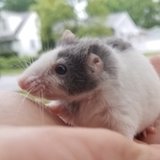
Peachy- Moderator

- Join date : 2016-04-06
Posts : 3167


 They have been released :(
They have been released :(
We did it! We took them to the top field and released them in the hedgerow.
Its a very quiet path where people don't often walk along and its where 3 fields join so they have plenty or wheat and corn to feed on.
We used one of those tubes you buy posters in, and put in their bedding fluff and a bit of food and put it in a little bit of undergrowth that has plenty of shrubs and leaves growing and covered it over as suggested.
One came out to explore and the other 2 stayed inside but I am sure they would have ventured out by now as its been warm and dry and they are all very curious little mites.
They were really healthy and chubby so I think we did ok in hand feeding them and getting them weaned of the kitten milk.
I'm now totally lost without them and you maybe right, maybe a couple of domesticated mice maybe the answer but I will miss my little Hickory, Dickory and Dock very much


Its a very quiet path where people don't often walk along and its where 3 fields join so they have plenty or wheat and corn to feed on.
We used one of those tubes you buy posters in, and put in their bedding fluff and a bit of food and put it in a little bit of undergrowth that has plenty of shrubs and leaves growing and covered it over as suggested.
One came out to explore and the other 2 stayed inside but I am sure they would have ventured out by now as its been warm and dry and they are all very curious little mites.
They were really healthy and chubby so I think we did ok in hand feeding them and getting them weaned of the kitten milk.
I'm now totally lost without them and you maybe right, maybe a couple of domesticated mice maybe the answer but I will miss my little Hickory, Dickory and Dock very much



Hickory- Guest
 Winter
Winter
Hello~
Thanks so much for this great article. I found a mouse in a parking lot.. it was near death on a hot day. With you article I was able to resuscitate it, feed it, and then found an awesome abandoned property a few days later. I fashioned a safe-house from old birdhouse and set her free! She was ready.
My question is this.. I live in Maine... so does mouse(:
Should I remove safe house before winter so she'll be more likely to make her way into abandoned property and be warm and dry for harsh winter?
Thanks for all the valuable info!
Barbara
Thanks so much for this great article. I found a mouse in a parking lot.. it was near death on a hot day. With you article I was able to resuscitate it, feed it, and then found an awesome abandoned property a few days later. I fashioned a safe-house from old birdhouse and set her free! She was ready.
My question is this.. I live in Maine... so does mouse(:
Should I remove safe house before winter so she'll be more likely to make her way into abandoned property and be warm and dry for harsh winter?
Thanks for all the valuable info!
Barbara
BarbaraB- Guest
 Wild mouse visitor
Wild mouse visitor
Hi! I found a mouse trying to get into our neighbors apartment and I was going grab him and take him to the field so he couldnt get in. BUT...he was so cold as soon as i picked him up, he laid just closed his eyes and fell asleep. He never tried to run. He looked healthy. I filled a hot water bottle and put a pillow case on top. I set him in it outside my front door and he stayed there sleeping but left in the morning. The morning after, he was back at my front door under my shoe. I walked up to him and he didnt run. I got the hot water bottle filled and set it down with the pillowcase on the ground and he went over to it and fell asleep. Hes still there. Is this normal? Chirocastevie at yahoo is my e mail
Chirocastevie- Guest
 Need sleep lol
Need sleep lol
I was wondering as they do have the fuir and there eyes are not open just yet is it safe to feed them every 3 hours has i have chronic fatigue and fm so im very tired a sore and need my sleep but i dont want them to die
Becky881- Guest
 Re: Wild Mouse/Mice care and information
Re: Wild Mouse/Mice care and information
Every 2-3 hours should be fine. If they seem to be having problems than perhaps revisit and try to feed more often if you can. Good luck, I hope it goes well. 


Peachy- Moderator

- Join date : 2016-04-06
Posts : 3167


 Question
Question
How can I stimulate a 6-10 day old mouse to go potty? I recently found a dead mouse in a nest with two babies, one dead and one alive, about 6 hours later, nothing had changed so I took the live baby home. I had no milk but kept it warm and it survived the night, now I've given it a few drops of kitten replacement milk we bought and ive read that baby mice need to be encouraged to go potty, but I don't want to hurt it. (It's running around on a towel at the moment, its very energetic, even though it hasn't opened its eyes yet)
3rin_minni3- Guest
 Re: Wild Mouse/Mice care and information
Re: Wild Mouse/Mice care and information
Check out this article, scroll down to the handraising section: https://www.petmousefanciers.com/t43-breeding-packet#71
After feeding make sure you rub the orphans belly gently with a Q-tip. Try to massage until the baby goes potty. A baby can NOT go potty by itself, you need to assist it. If you do not assist it, it will die from being backed up. Do not rub too hard or irritate the skin. If you have been massaging for a long time and it will not potty, stop for a while and try again later.

Peachy- Moderator

- Join date : 2016-04-06
Posts : 3167


 Newborn wild orphan mouse
Newborn wild orphan mouse
Hi! I found a what seems to be relatively newborn mouse in the stable today. Left it at the corner I found him for a while, while I went to continue work. The mother never showed up. Now I've taken it inside and fed it with baby formula with soy (read somewhere that I could do that). I have no experience with mice, and especially not orphan mice. Do you have any tips on how to give it the best chances possible to survive? I read somewhere that you should try to find a new mum, but since I don't really want to own a mouse right now, I don't want to buy one at the petstore. Is it possible to try make one of the wild mice in the stable adopt it, or is this as good as impossible after a human have held it?
As earlier mentioned, I have absolutely no experience when it comes to mice, so sorry if I sound really dumb now.
As earlier mentioned, I have absolutely no experience when it comes to mice, so sorry if I sound really dumb now.
Fridalaa- Guest
 Re: Wild Mouse/Mice care and information
Re: Wild Mouse/Mice care and information
Hello, note that people will be able to find your question a lot easier and answer it if you make your own thread, rather than posting in an existing one. I don't know the answer, but others here do.
_________________


CinnamonPearl- Hero Member

- Join date : 2016-04-06
Posts : 1725

 Re: Wild Mouse/Mice care and information
Re: Wild Mouse/Mice care and information
Fridalaa wrote:Do you have any tips on how to give it the best chances possible to survive? I read somewhere that you should try to find a new mum, but since I don't really want to own a mouse right now, I don't want to buy one at the petstore. Is it possible to try make one of the wild mice in the stable adopt it, or is this as good as impossible after a human have held it?
Just all the advice in the first post on this thread. Read through it all and it should have you well on your way. I would not try to introduce the abandoned wild baby to a pet mouse or another wild mother. Likely would not go well. That advice you read was likely in reference to an orphaned pet baby mouse. If he survives, you should release once he's old enough and weather permits. Good luck!
CallaLily- Hero Member

- Join date : 2016-04-03
Posts : 3937

Page 1 of 3 • 1, 2, 3 
 Similar topics
Similar topics» My wife and I are Trying to figure out our wild caught (tiny lil guy) Stu's gender also his Species PLEASE HELP!!!
» Where Did the TFM Mouse Care Information Go?
» How to care for baby mice
» Advice Needed: Wild Mouse care
» Looking for mouse diet information?
» Where Did the TFM Mouse Care Information Go?
» How to care for baby mice
» Advice Needed: Wild Mouse care
» Looking for mouse diet information?
Page 1 of 3
Permissions in this forum:
You cannot reply to topics in this forum










